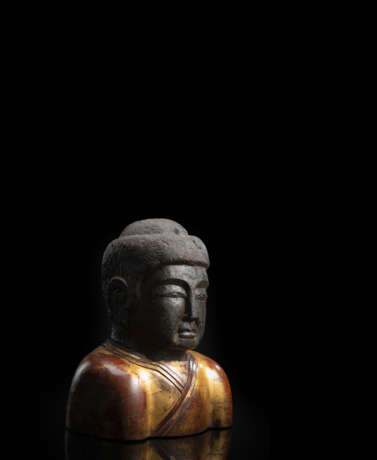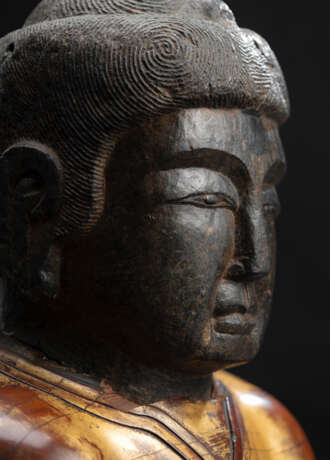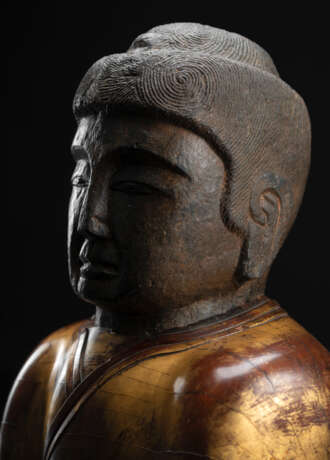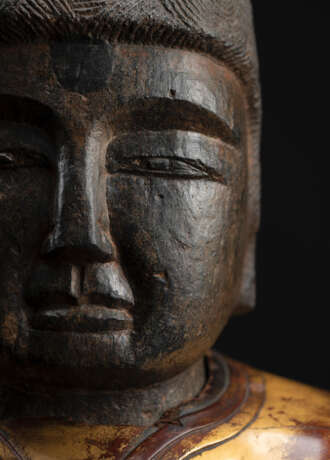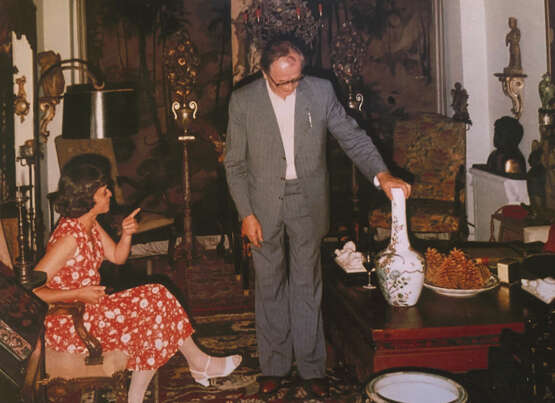ID 972551
Lot 293 | Seltene Büste des Buddha Shakaymuni
Valeur estimée
€ 10 000 – 15 000
H. 32/45 cm
Zweiteilige Büste mit Kopf des Buddha Shakyamuni aus Stein, der vermutlich ins 8./9. Jh. datiert wird. Feine Gesichtszüge mit niedergeschlagenen Augen unter gewölbten Augenbrauen, die in den Nasenrücken übergehen über einem geschlossenen Mund mit vollen Lippen. Das Haar in spiralförmigen Locken gekämmt mit niedriger 'usnisha' mit 'ratna'. Der Stand in Form der Brustpartie mit seitlich angeschnittenen Armen aus Holz mit partiell goldfarbener Lackfassung.
| Catégorie maison de vente aux enchères: | Art asiatique |
|---|
| Catégorie maison de vente aux enchères: | Art asiatique |
|---|
| Adresse de l'enchère |
Nagel Auktionen GmbH Neckarstrasse 189 - 191 70190 Stuttgart Allemagne | ||||||||||||||
|---|---|---|---|---|---|---|---|---|---|---|---|---|---|---|---|
| Aperçu |
| ||||||||||||||
| Téléphone | +49 (0)711 649 690 | ||||||||||||||
| Fax | +49 (0)711 649 69696 | ||||||||||||||
| Commission | 29,5% | ||||||||||||||
| Conditions d'utilisation | Conditions d'utilisation | ||||||||||||||
| Heures d'ouverture | Heures d'ouverture
|


